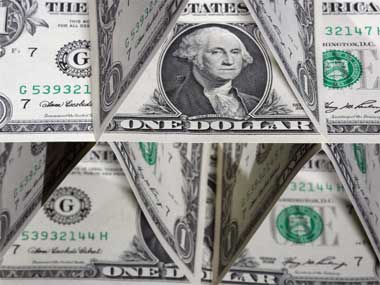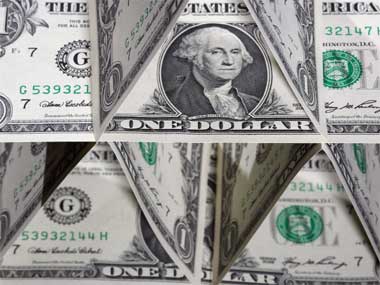By George Albert, special to Firstpost
The US dollar index and silver are at important turning points after the recent correction in the greenback, and rally in the white metal. It’s a time for traders to pause and take a new look at their positions. When asset prices move too fast in one direction, they tend to correct themselves to their mean levels.
[caption id=“attachment_17001” align=“alignleft” width=“380” caption=“The dollar was on a tear most of this month, while silver turned weak. Dan Kitwood/Getty Images”]
 [/caption]
[/caption]
The dollar was on a tear most of this month, while silver turned weak. However, last week, the dollar index retreated and silver moved up. As of Friday’s close, both the dollar uptrend and silver downtrend were intact despite some signs of a counter-action over the past few days.
The dollar index and silver right now are at crucial turning points. This essentially means that there is high probability of the dollar index resuming its uptrend and silver falling. The index closed at 74.95 on Friday and the turning point is between 74.30 and 74.50.
The dollar index had flattened out for three days in the 74.50 area, and then strongly rallied to touch 76.41. Now with prices returning to the level, another rally is a high probability.
This turning point is arrived at using technical analysis.Market technicians use Fibonacci retracement levels to identify turning points in price. Fibonacci was an Italian mathematician who identified patterns in nature that occur in certain number sequences. These numbers are applied to the stock market and seem to work with a fair degree of accuracy.
The Fibonacci retracement number identifies the percentage of correction a market will make before continuing on its trend. These percentage levels are 23.6%, 38.2%, 50%, 61.8% and 100%. The dollar index reaching the 74.50 area is also a 50% retracement level.
But here’s the catch: It’s not clear if the retracement levels work because the Fibonacci thesis is accurate, or if it’s a mere case of a self fulfilling prophecy.
Fundamentally speaking, the dollar re-emerged as a safe haven when the debt problems in Europe came under the spotlight once again. The fact that investors are getting risk-averse and seeking safe havens is clear as both the dollar and the gold have gained strength. In fact, the futures contract of gold traded on the Chicago Mercantile Exchange (CME) closed above the resistance area of $1530 last Friday. A resistance level is an area from where prices turn lower. The $1,530 level on gold has been holding the precious metal back during the month of May.
Now with prices closing above the level, gold may head higher. We would swtich our short-term outlook on gold to bullish as long as prices stay above the $1,530 level.
Silver: As we had mentioned in last week’s article, the dollar continues to control the price of silver. The white metal and the greenback are inversely related, hence as the dollar fell last week, silver rallied. However, unlike gold, silver has not broken its resistance level. The resistance level on silver’s futures contract traded on the CME is $39.75 and it closed at $37.99 last Friday. Unless silver closes above $39.75, it’s likely to stay bearish. The level is marked by a white box in the chart nearby
Traders bearish on silver should wait for prices to hit the resistance level before shorting. A break above $39.75 should turn the short-term bias on silver to bullish.

George Albert is based in Chicago and edits www.capturetrends.com
)